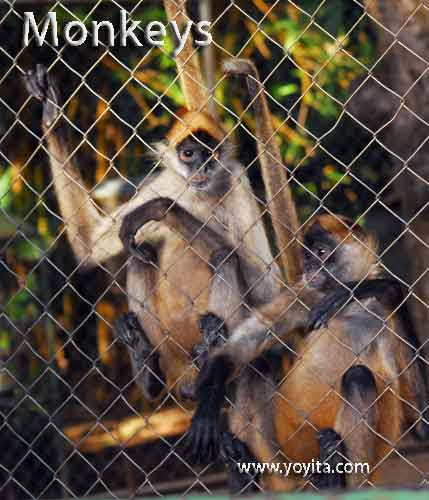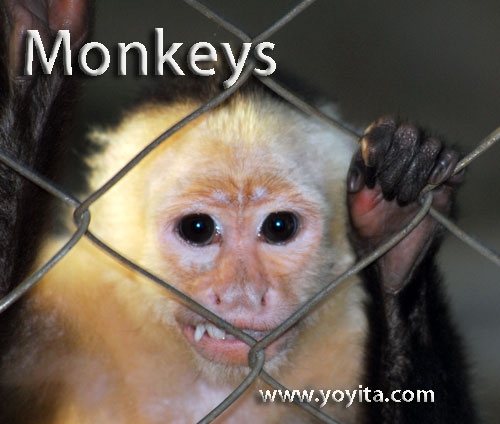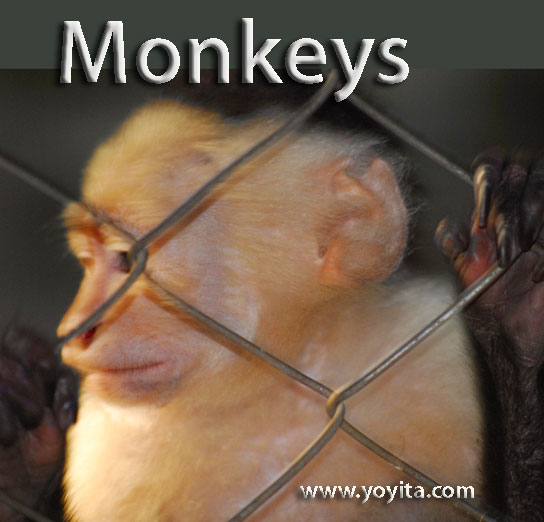Monkeys:
A monkey is a member of either of two of the three groupings of simian primates. These three groupings are the New World monkeys, the Old World monkeys, and the apes. The New World monkeys are classified within the parvorder Platyrrhini, whereas the Old World monkeys (superfamily Cercopithecoidea) form part of the parvorder Catarrhini, which also includes the apes. Thus, scientifically speaking, monkeys do not form a "natural group", in that the Old World monkeys are actually more closely related to the apes than they are to the New World species. There are 264 known extant species of monkey. Because of their similarity to monkeys, apes such as chimpanzees and gibbons are often called monkeys in informal usage, though biologists don't consider them to be monkeys. Conversely, due to its size (up to 1 metre) the Mandrill is often thought to be an ape, but it is actually an Old World monkey. Also, a few monkey species have the word "ape" in their common name.
Because they are not a single coherent group, monkeys do not have any particular traits that they all share and are not shared with the remaining group of simians, the apes.
The following lists shows where the various monkey families (bolded) are placed in the Primate classification. Note that the smallest grouping that contains them all is the Simiiformes, the simians, which also contains the apes. Calling apes "monkeys" is incorrect. Calling either a simian is correct.
* ORDER PRIMATES
o Suborder Strepsirrhini: non-tarsier prosimians
o Suborder Haplorrhini: tarsiers, monkeys and apes
+ Infraorder Tarsiiformes
# Family Tarsiidae: tarsiers
+ Infraorder Simiiformes: simians
# Parvorder Platyrrhini: New World monkeys
* Family Cebidae: marmosets, tamarins, capuchins and squirrel monkeys (56 species)
* Family Aotidae: night monkeys, owl monkeys, douroucoulis (8 species)
* Family Pitheciidae: titis, sakis and uakaris (41 species)
* Family Atelidae: howler, spider and woolly monkeys (24 species)
# Parvorder Catarrhini
* Superfamily Cercopithecoidea
o Family Cercopithecidae: Old World monkeys (135 species)
* Superfamily Hominoidea: apes
o Family Hylobatidae: gibbons ("lesser apes") (13 species)
o Family Hominidae: great apes including humans (7 species)
|




